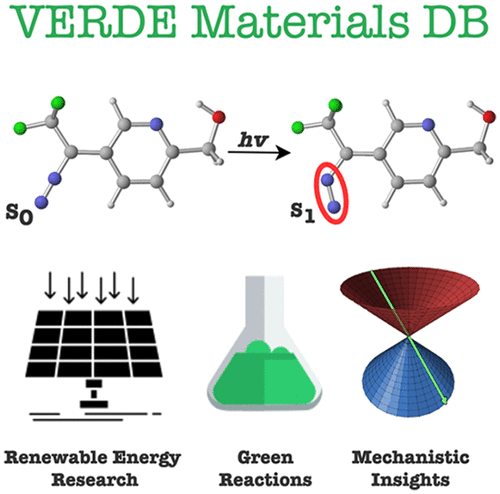NON-ADIABATIC PHOTODYNAMICS OF ORGANIC PERICYCLIC REACTIONS

Academic and industrial chemists have turned to photochemistry as a sustainable technique to construct highly strained–potentially explosive–molecular architectures to mimic structures created in Nature. Our group uses computational techniques such as multiconfigurational calculations (e.g., CASSCF) and nonadiabatic molecular dynamics (NAMD) to predict photochemical reaction outcomes and determine structure-property relationships. We focus on photochemical pericyclic reactions, including electrocyclic and cycloaddition reactions. This research has paved the way towards fundamental understanding of photochemical reactivities and stereoselectivities in collaboration with experimental groups across the US and world.

Covalent organic frameworks (COFs) are a class of viable 1-, 2-, or 3-D periodic porous crystalline structures that have been used in gas separation, catalysis, and organic electronics (including organic photovoltaics). The covalent bonds provide structural rigidity for mechanical and thermal stability for a wide range of structures and applications, while the optical properties can be tuned by choosing ideal molecular fragments or through chemical modification. This research is inspired by non-planar polyaromatic materials [e.g., Subphthalocyanines (SubPcs)] capable of molecular recognition with other contorted polyaromatic π-conjugated materials. We are rationally designing COF-based co-crystalline OPVs that absorb visible light, separate charge, and avoid recombination by taking advantage of their long-range order and porosity.The COFs are designed to achieve directional charge transport through substantial intramolecular orbital overlap through the framework and intermolecular overlap between the COF and fullerenes or non-fullerene acceptors.
HIGH THROUGHPUT VIRTUAL SCREENING AND THE VERDE MATERIALS DB

We recently published the Virtual Excited State Reference for the Discovery of Electronic materials database (VERDE materials DB) at www.verdedb.org powered by the infrastructure capabilities of the Materials Data Facility. The high throughput computing infrastructure has been used to identify next-generation organic chromophores with applications in photovoltaics, bioimaging agents, photoaffinity labels, and catalysts. We are using this resource to develop machine-learning-based force fields to accelerate photodynamics simulations and excited-state structure prediction. Future directions include community input of interesting molecules, downloadable ground- and excited-state structures, and time-dependent trajectory simulations for prediction of transient absorption spectra.